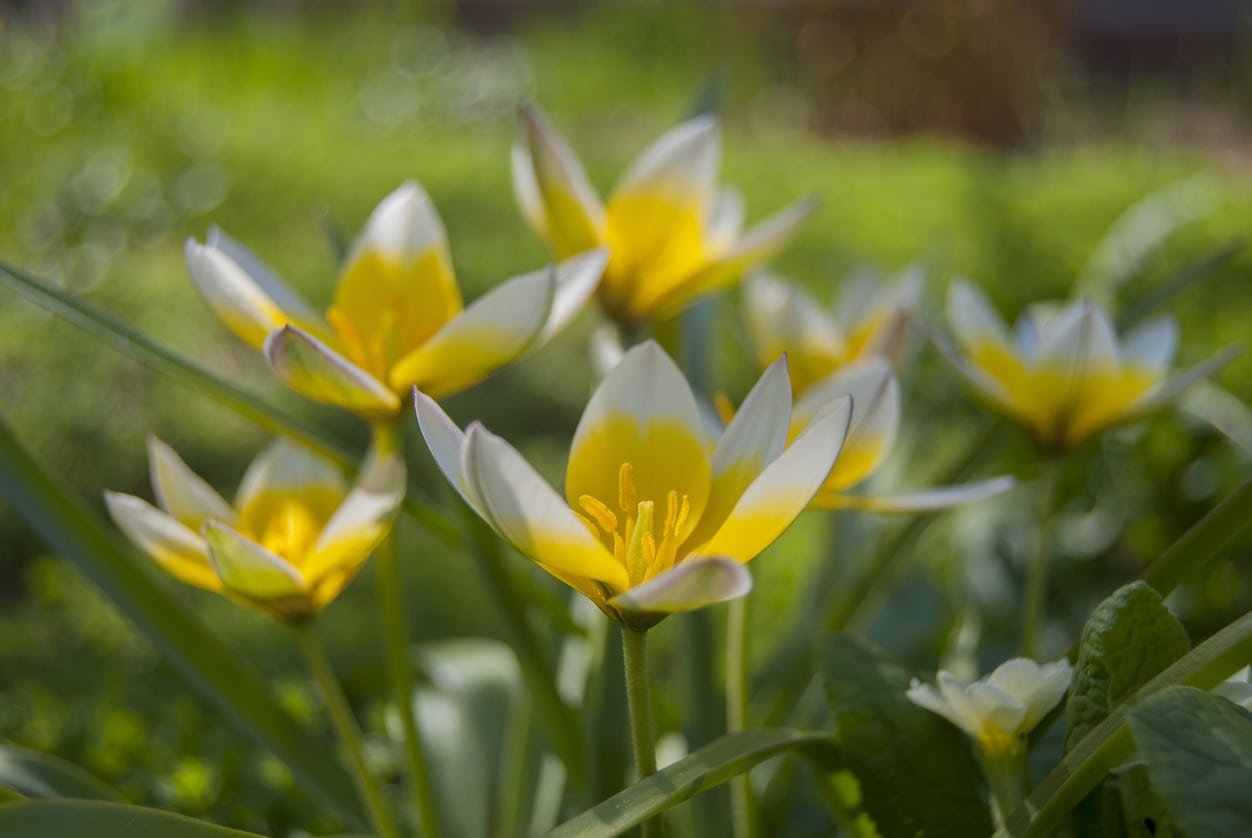Kaufmanniana Plant Info: Tips For Growing Water Lily Tulips


What are Kaufmanniana tulips? Also known as water lily tulips, Kaufmanniana tulips are showy, distinctive tulips with short stems and huge blooms. Kaufman tulip flowers return every year and look stunning in naturalized settings with crocus and daffodils. The following article provides more Kaufmanniana plant info, including tips on growing Kaufmanniana tulip plants.
Kaufmanniana Plant Info
Kaufmanniana tulip plants are native to Turkistan, where they grow wild. They were introduced to Europe in 1877. Today, Kaufman tulip flowers are available in nearly every color except true blue, including dazzling shades of rose, golden yellow, pink, violet, orange, and red. Interiors of the blooms are multicolored. Like all spring bulbs, Kaufmanniana looks best when planted in groups of at least five or ten. These early-blooming tulips are especially noticeable when planted in combination with other flowering bulbs. Water lily tulips are suitable for growing in USDA plant hardiness zones 3 through 7. In warmer climates, Kaufmanniana tulip plants can be grown as annuals.
Caring for Kaufmanniana Water Lily Tulips
Like most tulip bulbs, they should be planted in fall, around October or November. Plant Kaufmanniana tulip bulbs in rich, moist, well-drained soil and full sunlight. Dig in a little compost and all-purpose granular fertilizer to the get the bulbs off to a good start. Spread 2 or 3 inches (5-8 cm.) of mulch over the planting area to conserve moisture and staunch growth of weeds. Water deeply after planting, as water lily tulips need moisture to trigger growth. Thereafter, don’t water unless the weather is hot and dry. Tulip bulbs rot in soggy soil. Feed Kaufmanniana tulips every spring, using a general-purpose fertilizer or a handful of bone meal. Remove flower stems immediately after flowering, but don’t remove foliage until it dies down and turns yellow.
Sign up for the Gardening Know How newsletter today and receive a free copy of our e-book "How to Grow Delicious Tomatoes".

A Credentialed Garden Writer, Mary H. Dyer was with Gardening Know How in the very beginning, publishing articles as early as 2007.